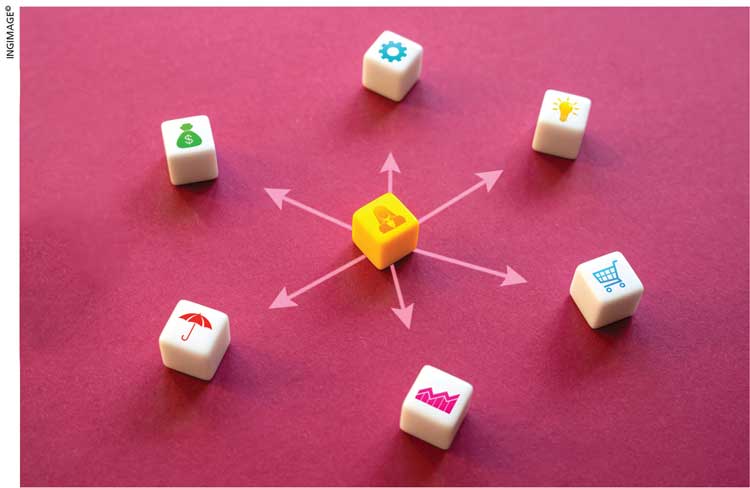STRATEGIC MARKETING
SMART STRATEGY TO SURVIVE
Businesses should bundle services to be competitive – Dr. Muneer Muhamed
Whenever I suggest bundling services to stay competitive, my clients in industrial businesses often sport a puzzled look. In these tough times, they are fighting to maintain the current quarter’s targets… like everyone else.
Did you register double digit growth quarter on quarter before the COVID-19 pandemic or do you belong to the club of those with sluggish sales every month?
Unless businesses are completely focussed on strategy and its execution, it will be a huge task to sustain growth and profitability on quarter on quarter and year on year bases.
Having compared many businesses with and without a robust system such as the balanced scorecard (BSC) for executing strategy, I know for sure the ones that are achieving success in bad times are those with robust execution frameworks and processes.
If your product sales are lagging, don’t panic. Almost every B2B marketer feels the slump. But not everyone is simply hanging on to the same old strategy from boom times. Nor is everyone relying on desperate measures such as layoffs, price concessions and indiscriminate spending cutbacks to survive.
Smart manufacturers are modifying their strategies to emphasise the service side of their businesses. And if they don’t already have a potent service component among their offerings, they are adding it.
They realise that in B2B markets, service – either as a stand-alone offering or as part of one bundled with a product – can differentiate them, combat margin squeeze and provide competitively superior value that their cost cutting rivals can’t hope to match.
Many industrial organisations have gained momentum by positioning their expertise and industry knowledge as service businesses. For example, one enterprise generated more than 25 percent of its revenue from its service business and estimated this to be the focus area needed to triple its turnover in the next three years or so. By using the BSC, they are redrawing their strategy map.
These entities and many other industry leaders recognise that customers want solutions, as well as great product features. And these solutions are increasingly including services, particularly as technology shortens the product innovation life cycle and erodes the higher prices that innovation can command.
You can no longer simply toss out products.
Business services are varied and aren’t new to the marketplace. Professional services like law and advertising, and industrial services such as janitorial and waste treatment, have existed for their own sake.
Services bundled with a product offering and unbundled for those who don’t want them create a competitive advantage that’s tough for competitors to imitate – at least, in certain market segments.
Service oriented strategies do pose some risks, particularly for manufacturers who are simply grafting a service enhancement onto the same old offerings and product-centric strategies. The service must be flexible enough so that it can be tailored to a customer’s perceived needs.
Presentation skills in marketing, positioning and selling are critical if the strategy is to succeed with customers who have good reasons to be wary. Buyers cannot probe and test a service in advance because it exists only as it’s being performed through processes that the customer might not understand and be able to evaluate.
Clients need to rely on the marketer’s track record, reputation and other indirect cues about what they can expect.
Furthermore, while a manufacturer can avoid shipping defective physical products from a plant, the service that is performed in real time at the customer’s site cannot be pulled back or hidden from the client if it’s messed up.
And the quality of the service rendered depends heavily on the expertise and customer-centric attitude of the seller’s employees or agents. These cultural issues are often foreign to traditional manufacturers.
Clients expect the business to recommend the best equipment for an application, even if it is not owned by the organisation. Unless it can provide a superior product, the service staff will have to feel comfortable recommending another brand, which could belong to a competitor.
As declining markets ratchet up the pressure on marketers, differentiated offerings with palpable value enhancements are increasingly becoming the intelligent marketer’s strategic weapon of choice. Cutting back spending on marketing only hands market share to those competitors who don’t cut back.
Layoffs, particularly due to buyouts that tend to attract your best personnel, are rather short-sighted and sap a business’ long-term strength for a fleeting short-term gain. And giving up margin by cutting price and hoping to protect market share is not a strategy. At best, it is a passive ‘ok, kick me’ strategy; and at worst, it’s suicidal.
The right answer in tough times is to ‘compete smarter’ – with services often being the answer.




